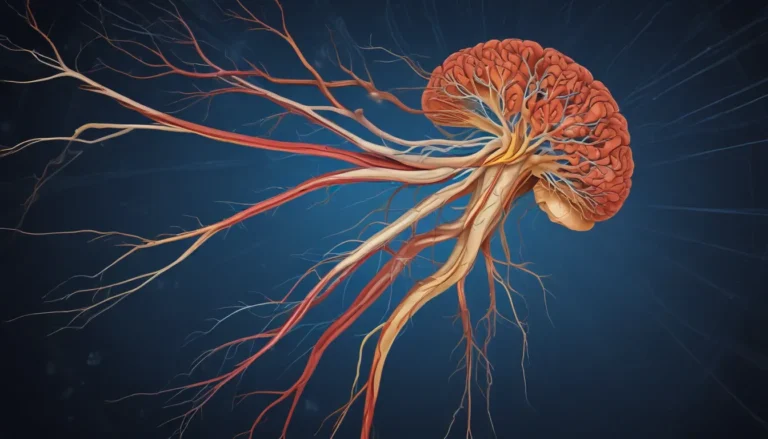A Note About Images: The images used in our articles are for illustration purposes only and may not exactly match the content. They are meant to engage readers, but the text should be relied upon for accurate information.
Virology, the study of viruses, is a captivating field that plays a crucial role in understanding and combating various infectious diseases. As technology advances, so do the techniques used in virology research. From the development of sophisticated diagnostic tests to the exploration of cutting-edge genomic sequencing methods, virologists continue to push the boundaries of scientific knowledge. In this article, we will delve into the fascinating world of virology techniques and uncover 13 intriguing facts about them. These techniques offer valuable insights into virus structure, behavior, and evolution, leading to better understanding and treatment options for viral diseases.
Delving Deeper into Virology Techniques
Virology techniques like PCR and ELISA help scientists study and diagnose viral diseases, leading to better understanding and treatment options. Advanced technologies like next-generation sequencing and CRISPR-Cas9 offer promising solutions for combating viral infections and developing antiviral therapies.
PCR: The Revolution in Virology Research
PCR (Polymerase Chain Reaction) is a powerful technique that allows scientists to amplify small fragments of viral DNA or RNA for analysis. It has greatly advanced our understanding of viral diseases, enabling the detection of viral genetic material in samples with high accuracy and sensitivity.
ELISA: A Cornerstone for Virus Detection
ELISA (Enzyme-Linked Immunosorbent Assay) is a widely used technique that uses antibodies to detect and quantify viral antigens or antibodies in a sample. It plays a crucial role in diagnosing viral infections by identifying specific proteins or antibodies associated with particular viruses.
Virus Isolation: Unraveling Viral Properties
Virus isolation involves growing viruses in cell cultures or laboratory animals to study their replication, pathogenicity, and sensitivity to antiviral drugs. It allows scientists to investigate various aspects of viral biology, such as host interactions and virulence factors.
Visualizing Viruses with Electron Microscopy
Electron microscopy is an essential technique for visualizing viruses at the nanoscale level. It uses a beam of electrons to create high-resolution images of viral particles, providing valuable information about their structure and morphology, aiding in the identification of novel virus species.
Unleashing the Power of CRISPR-Cas9 in Antiviral Therapy
The CRISPR-Cas9 gene-editing system holds promise for developing targeted antiviral therapies. It can be used to disrupt viral genes or inhibit viral replication, offering a potential strategy to combat viral infections by precisely targeting specific viral sequences.
Serological Assays: Detecting Antibodies Against Viruses
Serological assays, such as neutralization tests or Western blotting, detect specific antibodies produced in response to viral infections. These assays play a crucial role in determining past infections or immune responses to vaccines, aiding in the development of effective treatments and prevention strategies.
Flow Cytometry: Analyzing Viral-Infected Cells
Flow cytometry enables researchers to analyze viral-infected cells by measuring properties such as cell surface markers, viral protein expression, or cell cycle alterations. It aids in understanding the dynamics of viral replication and host-virus interactions, providing valuable insights into viral pathogenesis.
In Situ Hybridization: Visualizing Viral Nucleic Acids
In situ hybridization is a technique used to visualize viral nucleic acids within infected cells or tissues. It provides spatial and temporal information about viral replication and distribution in the host organism, offering valuable insights into viral lifecycle and pathogenicity.
RT-PCR: Detecting Viral RNA
RT-PCR is a specialized technique used to convert viral RNA into complementary DNA (cDNA) and amplify specific sequences for detection. It is commonly used to diagnose RNA viruses and monitor viral load in infected individuals, aiding in the rapid and accurate identification of viral infections.
High-Throughput Screening: Identifying Antiviral Compounds
High-throughput screening involves testing large numbers of compounds to identify potential antiviral drugs. This technique has accelerated the discovery of novel therapeutic agents against viral infections, leading to the development of new antiviral therapies and preventive measures.
Viral Metagenomics: Exploring Viral Diversity
Viral metagenomics is a powerful tool for studying viral communities in different environments. It involves sequencing all the genetic material present in a sample to reveal the diversity of viruses and their potential impact on ecosystems, aiding in the understanding of viral ecology and evolution.
The Vital Role of Bioinformatics in Virology Research
Bioinformatics combines biology and computer science to analyze and interpret large volumes of viral genomic data. It helps in understanding viral evolution, predicting virulence factors, and developing computational models to combat viral diseases, facilitating the rapid advancement of virology research.
Conclusion: Advancements in Virology Techniques
In conclusion, the field of virology has made significant advancements in techniques used to study and understand viruses. From the development of sophisticated diagnostic tests to the use of innovative imaging technologies, scientists and researchers continue to push the boundaries of what is possible in the field. These techniques have greatly contributed to our understanding of viral diseases, helping to identify new pathogens, develop effective treatments, and prevent outbreaks. As new technologies emerge and our knowledge of viruses expands, we can expect even more exciting developments in the field of virology techniques.
FAQs
Q: What are some commonly used virology techniques?
A: Some commonly used virology techniques include polymerase chain reaction (PCR), immunofluorescence assays, electron microscopy, enzyme-linked immunosorbent assay (ELISA), and next-generation sequencing (NGS).
Q: How does polymerase chain reaction (PCR) work in virology?
A: PCR is a technique that amplifies a specific segment of DNA or RNA. In virology, PCR is used to detect the presence of viral genetic material in a sample, helping to identify and diagnose viral infections.
Q: What is the role of immunofluorescence assays in virology?
A: Immunofluorescence assays involve the use of fluorescently-labeled antibodies to detect and visualize specific viral antigens in infected cells. This technique is useful for identifying the presence of a virus in a sample and studying its localization within cells.
Q: How does electron microscopy contribute to virology research?
A: Electron microscopy allows scientists to visualize viruses at a high resolution, providing valuable insights into their structure and morphology. This technique is particularly useful for studying the ultrastructure of viruses and identifying novel virus species.
Q: What is the purpose of enzyme-linked immunosorbent assay (ELISA) in virology?
A: ELISA is a technique that detects the presence of antibodies or antigens in a sample. In virology, ELISA is commonly used to detect and quantify specific viral proteins or antibodies produced in response to a viral infection.
Q: How does next-generation sequencing (NGS) revolutionize virology research?
A: NGS allows for the rapid and simultaneous sequencing of multiple viral genomes. This technique has greatly advanced our understanding of viral evolution, transmission dynamics, and the identification of new viral species, leading to improved diagnostics and prevention strategies.





